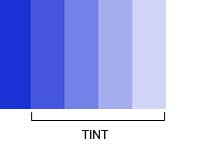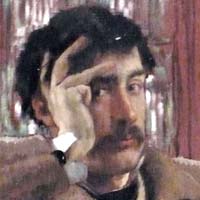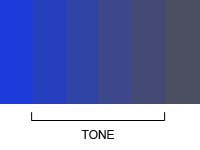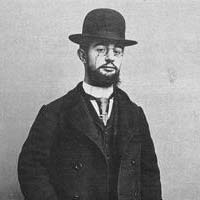| Glossary Of Art Terms
[7] |
T
Tempera paint Traditionally, tempera was made by mixing colored, powdered pigments with egg yolk, though today other water-soluble binders often replace the latter.
Tempera was one of the earliest kinds of paint, and is best known today as a children's paint because it is non-toxic and cleans up easily with water.
|
| Tertiary Colours The resulting colours formed when an equal amount of a primary and a secondary color are mixed. The primary and secondary color must be beside each other on the colour wheel. For example, a mixture of 50-percent red and 50-percent magenta would result in the tertiary color of orange. |
| Tint A tint is a color created when a solid color is mixed with white, creating a lighter version of the color. In contrast, a "shade" is a color mixed with black to create a darker version of the color. In printing and color reproduction, a tint refers to a variation of a base color achieved by adding white or another lightening agent to lighten or dilute the color's intensity. Tints are commonly used to create subtle variations in color, achieve pastel shades, or adjust the brightness and saturation of colors in printed materials. Tints play a vital role in color matching, color correction, and color harmony in graphic design, illustration, and printing. |
 |
| Tissot, James 1836-1902: A French painter and illustrator who was known for his images of fashionably dressed women and scenes of everyday life. Choose from one of our many classic art prints. |
 |
| Tone Tone refers to the degree of lightness or darkness of a color, often described in terms of its brightness or value. In visual arts, tone is an essential aspect of color theory and perception, influencing the overall mood, contrast, and visual impact of an image or artwork. Tones range from light to dark along a grayscale or tonal scale, with lighter tones containing more white or lightness and darker tones containing more black or darkness. Adjusting tone can alter the perceived depth, form, and spatial relationships within an image, affecting its composition and emotional resonance. |
 |
| Toulouse-Lautrec, Henri 1864-1901: a French painter, printmaker, and illustrator of the post-Impressionist style, best known for his brightly colored posters. We offer many classic art prints of Toulouse-Lautrec's work. |
 |
TYVEK Made from polyethylene (a petroleum-based plastic) fibers flashspun to produce an unwoven, synthetic material, Tyvek (the brand name from the company DuPont) is most often used to protect building foundations before the siding has been put up. The material is strong and difficult to tear (but easily cut), and repels liquid water.
In printing, this substrate can be used much like regular paper, though it must be properly treated for any ink applications besides lithographic and flexographic. Solvent inks with too high a solvent concentration can cause the material to swell, and water-based inks may cause the image to feather or blur. Tyvek is commonly used for printing ski tags, banners, tags, and labels. |
|
© 2002-2025 - KeenART Media Ltd.
|
|
| |
|

